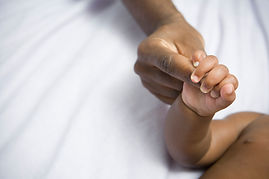Preventing Cradle Cap in Babies: Tips for a Healthy Scalp
- Theresa Garcia
- Jul 25, 2023
- 3 min read

Cradle cap, also known as infantile seborrheic dermatitis, is a common condition characterized by flaky, yellowish scales on a baby's scalp. While cradle cap is harmless and typically resolves on its own, it can cause discomfort and concern for parents. Fortunately, there are several preventive measures you can take to minimize the occurrence and severity of cradle cap in your baby.
I. Understanding Cradle Cap

It's important to understand the causes and characteristics of cradle cap. Cradle cap is believed to result from overactive oil glands, excess production of sebum, and the colonization of certain types of yeast on the baby's scalp. The condition is not contagious, and it typically appears as greasy, flaky scales or crusts on the scalp, eyebrows, or behind the ears.
II. Scalp Care and Cradle Cap Prevention
1. Gentle Scalp Cleansing: Regularly cleanse your baby's scalp using a mild, fragrance-free baby shampoo. Gently massage the shampoo onto the scalp and rinse thoroughly. Avoid using harsh soaps or adult shampoos that can strip the scalp's natural oils.

2. Brushing or Combing: Use a soft-bristle brush or a fine-toothed comb to gently brush or comb your baby's scalp. This helps loosen and remove any scales or flakes, promoting a healthy scalp and preventing buildup.
3. Moisturize the Scalp: After bath time, apply a gentle, hypoallergenic baby moisturizer or natural oil, such as coconut oil or almond oil, to your baby's scalp. Moisturizing helps nourish the scalp, reduce dryness, and prevent excessive oil production.
4. Avoid Overwashing: While it's important to keep your baby's scalp clean, avoid overwashing as it can lead to dryness and irritation. Stick to a gentle cleansing routine, ideally two to three times a week, and rinse thoroughly to remove any residue.
5. Avoid Tight Hats or Headbands: Tight hats or headbands can trap heat and moisture, contributing to the development of cradle cap. Opt for loose-fitting hats or simply allow your baby's scalp to breathe freely.
6. Minimize Heat and Humidity: Excessive heat and humidity can exacerbate cradle cap. Keep your baby's environment comfortably cool and well-ventilated. Avoid bundling them up excessively to prevent sweating and moisture buildup.
7. Maintain a Healthy Diet: If you are breastfeeding, consuming a balanced diet rich in essential fatty acids and nutrients can promote a healthy scalp for your baby. If formula feeding, ensure you are using an appropriate and nutritionally balanced formula.

8. Be Mindful of Allergens: Some studies suggest a link between cradle cap and allergens, such as certain foods or environmental factors. If you notice a pattern of worsening cradle cap symptoms after exposure to specific allergens, consult with a healthcare professional for guidance.
9. Avoid Picking or Scratching: It's important to resist the urge to pick or scratch at the scales or flakes on your baby's scalp. Picking can lead to skin irritation or even infection. Instead, focus on gentle scalp care and allowing the condition to resolve naturally.
III. When to Seek Medical Advice
In most cases, cradle cap can be managed at home with the tips mentioned above. However, there are instances when it's advisable to seek medical advice:
1. Severe Symptoms: If your baby's cradle cap is causing significant discomfort, inflammation, or signs of infection, such as redness, swelling, or pus, consult a healthcare professional for evaluation and appropriate treatment.
2. Persistent Symptoms: If despite your efforts, the cradle cap persists or worsens over time, it's advisable to seek medical advice. Your healthcare provider can assess the situation and offer personalized recommendations or additional treatment options.
3. Other Concerns: If you have concerns about your baby's scalp health or suspect that the condition may be something other than cradle cap, it's best to consult with a healthcare professional for an accurate diagnosis and appropriate management.
Cradle cap is a common condition that can cause distress for both babies and parents. By adopting proper scalp care practices and following the preventive tips outlined in this blog, you can minimize the occurrence and severity of cradle cap in your little one. Remember to maintain gentle scalp cleansing, moisturize regularly, avoid overwashing, and seek medical advice when necessary. With consistent care and attention, you can help promote a healthy and comfortable scalp for your baby, allowing them to thrive and enjoy their early months with minimal discomfort.




Comments